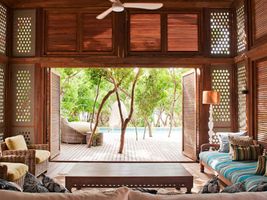A Honeymoon as Unique as Your Love Story
These days, most honeymooners want to do more than just bask on a beach somewhere - they're after a truly unique experience. And in pursuit of the exceptional, honeymooners spend twice as much and stay twice as long. People are trying to do something a bit different and eco-tourism is becoming more and more popular.






Vamizi Island
One thing is certain about a stay at the Vamizi: You’ll spend it barefoot. The resort (the only occupant on a 7.5-mile island) subscribes to a “No News, No Shoes” policy that shouldn't be hard to follow—you can sunbathe au naturel on your villa’s private beach and dine al fresco among Samango monkeys and green turtles. A luxe resort off Mozambique’s northern coast, Vamizi is arguably the most stunning in the Quirimbas, and the only occupant (apart from a fishing village) on a seven-and-a-half-mile-long island with white sand beaches and a rain forest interior. Like most of the properties in the Quirimbas Archipelago, the project stresses both ecotourism and community building—the World Wildlife Fund is a partner.






Amandari, Bali
Views of the rice terraces of the Ayung River Gorge are part of the magic at this "beautiful property" designed as a Balinese village, whose name translates to "peaceful spirits." "Expect to be impressed by the accommodations," free-standing thatched-roof suites with glass on three sides, private gardens, and Balinese stone gateways. Interiors showcase teak and marble; outdoor tubs are surrounded by ferns and heliconia; and suites are reached by river-stone walkways.



Africa
Nowhere is the call of the wild stronger than in Africa, which continues to lure travelers with its promise of animals up close and untamed. If there is one overriding theme among these regions, it’s the dominance of South Africa. Seven of the highest scoring properties in the whole of Africa and the Middle East are in South Africa. Six of them are safari camps whose promise of wildlife is as much a draw today as it was when the first safaris set off in the 1800s.
